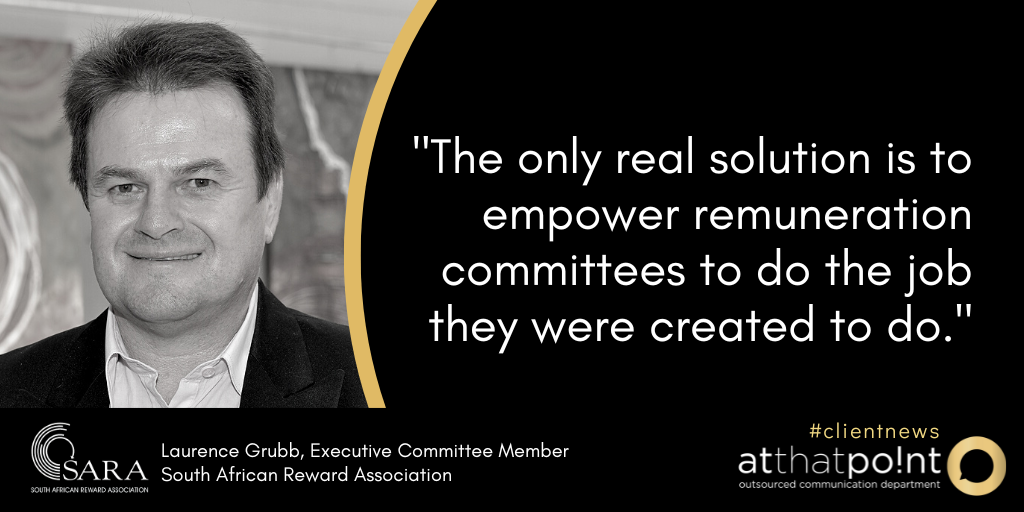 Stronger remuneration committees are the solution to rampant executive pay. This is according to Laurence Grubb, Master Reward Specialist and Executive Committee Member at the South African Reward Association (SARA). "We're seeing an imbalanced power dynamic between high-performing executives who associate significant rewards with the value they deliver and RemCos with structural expertise gaps that cannot assertively counter their demands," he says. Grubb suggests that alternative remedies are likely to do more harm than good. The danger of a binding vote The majority of South African businesses try to abide by the King IVTM code of corporate governance to achieve balanced and appropriate outcomes for executives, shareholders and other stakeholders. Yet, some CEOs, CFOs and executives continue to extract excessive remuneration from their companies. However, they have often built the enterprise from scratch or led it to significant growth, making them key to their company's success. So they may control the balance of power with a Board and Remco not willing to cross them. One suggested approach is to afford shareholders a binding vote that could deny gratuitous executive rewards, but Grubb says this is risky. "These leaders are the drivers of the business's growth and if their expectations are not met, they could move on and leave the Board to find a suitable successor, the impact of which will normally be a decline in the share price" says Grubb, noting that similar scarce talent might be impossible to find. Consequently, shareholders may end up shooting themselves in the foot. Rethinking the RemCo A better solution is to equip the RemCo with the necessary expertise to rationalise, negotiate and even restructure proposed packages in a way that satisfies of all parties. This requires that the committee augments its competencies with a deeper knowledge of current remuneration trends, industry standards and competitive best practices. To facilitate this solution, SARA is developing masterclass webinars and live sessions aimed at RemCo members, as well as other executive and non-executive directors, to enhance their understanding of executive remuneration. In addition, King IV suggests that the committee invites an external advisor to guide it in its duties. Executives will often hire remuneration consultants to help them determine the highest reward opportunities for their position. Their justification for greater compensation will be informed by data, industry benchmarks and practices and broader insights. RemCos without similar independent expertise will be left at a disadvantage. "In an ideal world, King IV might recommend a Master Reward Specialist as a standing member in all RemCos, allowing them to bring remuneration expertise, independent views and industry best practices to the negotiation," says Grubb. A real solution While most South African businesses have roped in runaway executive earnings, some executives continue to enjoy astronomical rewards. Many proposed solutions – like more onerous regulations or a binding vote for shareholders – may have unintended consequences which would prove to be negative in the long run. "The only real solution is to empower remuneration committees to do the job they were created to do," says Grubb. Most of all, they must be able to challenge the CEOs and executives who, up to now in some companies, have retained the balance of power in their struggle for greater rewards. ENDS MEDIA CONTACT: Rosa-Mari Le Roux, [email protected], 060 995 6277, www.atthatpoint.co.za For more information on SARA please visit: Website: www.sara.co.za Twitter: @SA_reward LinkedIn: South African Reward Association Facebook: SARA – South African Reward Association
0 Comments
Dr Mark Bussin, EXCO member of the South African Reward Association (SARA), says that powerful international trends are changing the governance and remuneration landscape significantly.
“These trends are ushering in a profound shift in how we think about governance and remuneration, and smart boards and executive teams need to understand their implications,” he says. “Many of them are developing trends, so companies will need to keep their eye on the ball, and develop flexible strategies to respond to a shifting set of variables.” Dr Bussin says that while there are multiple trends, the following are the most important as they represent key directional shifts: Institutions and regulators flex their muscles Underlying many of these trends is the indisputable fact that both institutional investors and regulators are getting much more specific about what they want from companies in which they are invested. In particular, advisors like Lewis Glass and Institutional Shareholder Services are gaining more influence as they provide advice to large clients, and their agendas are thus gaining traction. Key agenda items include ESG and human capital measurement. ESG becomes a board matter Environment, social and governance (ESG) reporting has become mandatory globally. “The move to include non-financial metrics is positive, as it supplements traditional backward-looking and quantitative financial metrics with a new set that are essentially forward looking and qualitative,” he argues. “However, measurement is much more difficult and there’s no real objective way of doing it yet.” Human capital reporting grows up Another move to a more qualitative approach sees traditional reporting based on figures relating to gender and race being complemented by a deeper look at how the company is managing its talent. “We’re looking beyond numbers-based affirmative action to consider things like dignity, respect and, above all, inclusivity,” Dr Bussin says. Pressure to simplify remuneration Variable remuneration frameworks designed to drive performance have become so complex that that it has become virtually impossible to establish what anyone really earns, and so benchmarking cannot be done. Focus on the vertical and horizontal pay gap continues to grow The vertical pay gap—the CEO’s salary compared to that of the lowest paid worker—seems less and less useful as a measure. The top jobs are becoming more and more complex, and so attracting higher wages, while the lowest remain static. “The vertical pay gap will continue to widen and, in any event, redistributing the CEO’s salary to workers would make absolutely no impact,” says Dr Bussin. “For that reason, companies are moving towards paying a living wage (rather a minimum wage) to all employees as a way to make a real impact on people’s lives.” The horizontal pay gap—also known as the gender pay gap—remains a highly controversial issue. The global average is in the region of 25% whereas in South Africa it falls into the 10%-20% range. While the issue is not as clear cut as it might seem—other factors such as genuine parity of the work done and differing work/life priorities play a role—this is something that is receiving more focus. Work-from-anywhere trend raises significant issues Remote working has been growing in popularity over the past decade or so, strengthened by the recent lockdowns. On the governance side, this work style will demand a move from input-based to outcome-based performance management. Getting this right will surely only be a matter of time, but the tax question is more vexing: to whom would a consultant living in country A and working for multiple clients in various other jurisdictions pay tax? No firm answer to this question exists as yet. A related issue is the growing number of contractors, freelancers, part-timers and consultants: what kind and level of benefits are they entitled to receive? If the answer is none, then should they not be paid a premium? ENDS MEDIA CONTACT: Rosa-Mari Le Roux, [email protected], 060 995 6277, www.atthatpoint.co.za For more information on SARA please visit: Website: www.sara.co.za Twitter: @SA_reward LinkedIn: South African Reward Association Facebook: SARA – South African Reward Association The Draft Companies Amendment Bill (the Bill), 2021, has been published by the Minister of Trade, Industry and Competition for public comment.
“One objective of the Bill is to make it easier to do business in South Africa, but its onerous remuneration disclosure requirements could turn foreign companies away,” says Laurence Grubb, Master Reward Specialist and executive committee member at the South African Reward Association (SARA). While the Association endorses fair remuneration practices, especially at the executive level, Grubb questions the timing and rationale of the proposed amendments. What is fair? The reasoning behind the proposed changes to the Bill is that they will help tackle the perceived injustice of excessive pay that has contributed to the country’s inequality. Yet, the Bill offers no indication of what is meant by “excessive”, and the use of the word in the introduction is emotive and creates the impression that this is a widespread common problem. Excessive is not defined, is a subjective term and therefore it is difficult to know what excessive pay is and who is paid excessively. Shareholder empowerment The one positive aspect of the Bill is that rather than using laws to cap executive pay, it advocates increased disclosure and the response of shareholders. Public companies and SOEs will be compelled to publish details of the gap between the top 5 percent highest-paid and bottom 5 percent lowest-paid employees. This is contrary to previous proposals to use the Palma ratio, i.e. the top 10 percent versus the bottom 40 percent, which is statistically considered to be a more reliable measure. These figures will be exposed to shareholders when they vote for or against the executive remuneration policy and implementation report at the organisation’s AGM. Without a 50 percent approval on these votes, proposed to be ordinary and binding resolutions, neither can be implemented. Moreover, if the policy is not approved and cannot be implemented, this means a delay until approval is obtained from the shareholders. Who is to be held to account if an excellent CEO leaves because the share scheme was not approved and hence no shares can be awarded? The implications for a ‘no’ vote on the implementation report are even more onerous. The entire remuneration committee (Remco) must step down. Does this mean from the Remco or the Board? The shareholders do not vote on the Remco appointments. Rather, the Board appoints the Remco members. Nothing is said about what must happen next. Does the company continue until the next AGM without a Remco? Can the removed members be re-elected? Must the Board appoint a new Remco from its remaining members? What happens if the Chair of the Board is a member of the Remco – when the Remo steps down it not only leaves the Board without a Chairman but also leaves other Committees without members which may cause problems in terms of being quorate. The implications for shareholders may scare them from voting against either resolution because of the consequences. Either way, it makes for uncertain, dangerous, high risk resolutions which may make companies wary of proposing changes and certainly cannot be seen as investor friendly. Consequences The effect of these and other disclosure requirements set forth in the Bill may dissuade foreign companies from investing or remaining on our shores and cause local businesses to seek alternative measures. “The government needs to realise that companies are not compelled to do business in South Africa,” warns Grubb. Rather, they may choose to relocate their head offices abroad where their executives are not affected by the new legislation. They may also reduce or outsource their lowest-earning staff to shrink the pay gap. Worse, they could simply seek out more favourable regions where it really is easier to do business and bypass South Africa altogether. “The real tragedy is that the greatest inequality is the gap between the country’s employed and unemployed, so we need to focus on improved education and job creation instead of witch-hunting that will ultimately harm the economy,” concludes Grubb. ENDS MEDIA CONTACT: Rosa-Mari Le Roux, 060 995 6277, [email protected], www.atthatpoint.co.za For more information on SARA please visit: Website: www.sara.co.za Twitter: @SA_reward LinkedIn: South African Reward Association Facebook: SARA – South African Reward Association 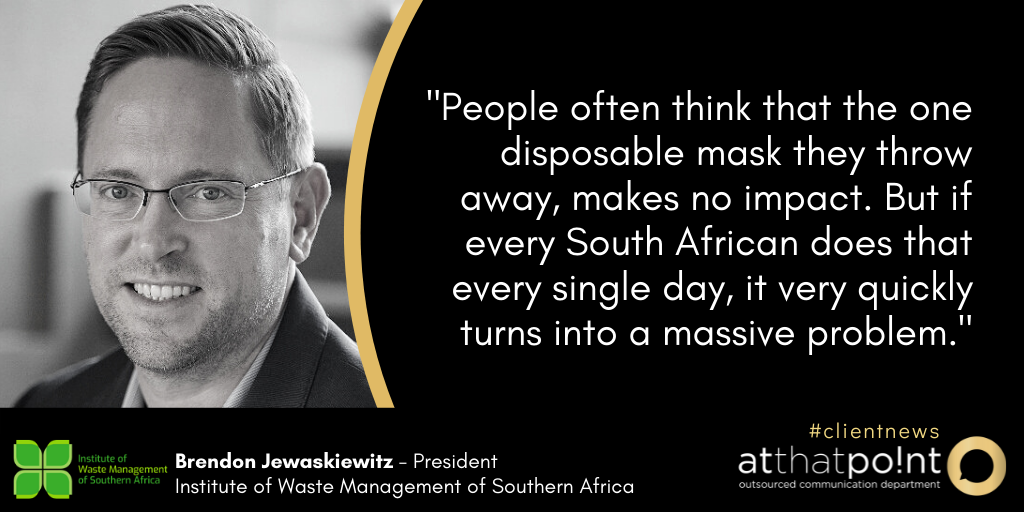 The Covid-19 pandemic has brought about the most flexible period in terms of employment and remuneration practices ever experienced. Companies reacted swiftly to the impact of the pandemic on the workplace and their ability to pay and retain staff. This has never happened in the past, says Yolanda Sedlmaier, Chartered Reward Specialist and executive committee member of the South African Reward Association (SARA). Companies who were already struggling pre-pandemic, paid lower incentive bonuses to their executive and pay increases across board ranged between 0% and 5%. Moral approach However, Covid-19 brought about a far greater moral approach to executive pay and incentives. For many companies, bonus payments for past performance (pre-Covid-19) were put on hold, delayed, cut or reallocated from May last year. “Many companies opted to reallocate some of the money into a company fund to assist staff who ran out of leave and were not able to return to work because of the hard lockdown during the initial stages of the pandemic.” Sedlmaier says the same happened in terms of leave. Companies requested employees who had a lot of leave to sacrifice it in order to allocate it to people who ran out of leave during the hard lockdown. Some companies actually benefited financially due to the pandemic, such as telecommunication and pharmaceutical companies. The demand for computers, data and airtime soared as people shifted from the company office to the home office. Several tech companies were in the position to continue paying their staff as usual, including bonuses. “However, several were circumspective in terms of paying bonuses or giving increases, as they felt a moral obligation not to do so while thousands of people were losing their jobs,” says Sedlmaier. “We are seeing more of that this year. Companies who were still paying bonuses in March last year were more circumspect this year. Covid-19 has certainly impacted on the morality of paying large bonuses in difficult times,” she notes. Retention measures Company executives were “expected” to take pay cuts for a period of at least three months last year, and in some cases the period was extended. Other companies offered all staff a three-month unpaid sabbatical or offered them reduced pay for reduced output. Many companies are quite wary about the possible impact of the third wave. Some have started increasing the number of people working on-site again, but with the third wave they experienced an increase in Covid-19 cases and are re-evaluating these arrangements further. Although there has been a slight pick-up in economic activity recently, the third wave is affecting everyone. “There is a possibility for more job losses,” says Sedlmaier. Future trends
ENDS MEDIA CONTACT: Idéle Prinsloo, 082 573 9219, [email protected], www.atthatpoint.co.za For more information on SARA please visit: Website: www.sara.co.za Twitter: @SA_reward LinkedIn: South African Reward Association Facebook: SARA – South African Reward Association Recent reports of shareholders voting against executive remuneration structures have again highlighted the need for increased transparency in the disclosure of not only the amounts paid, but how the amounts were calculated and the link to performance. Many companies have made significant progress with the disclosure of executive pay and the quality and content of remuneration policies and implementation reports.
However, the improved transparency of certain excessive executive pay packages has also fuelled the perception that all executives are paid exorbitant amounts of money, causing an ever increasing pay gap. Laurence Grubb, Master Reward Specialist and executive committee member of the South African Reward Association (SARA), says a handful of executives are still able to manipulate remuneration committees, despite notable efforts to follow the principles set out in King IV and the association’s guidelines. Committees agree to targets which are a little too soft or potential remuneration that is out of line with industry. “Although these executives are in the minority, it remains a concern and needs to be contained.” Independent advice needed Grubb says remuneration committees should be entitled to obtain independent advice from their own remuneration consultants to validate what has been presented to them by the executives. The cost for this service should be borne by the company. SARA published guidelines on the drafting of a remuneration policy and the implementation report at the beginning of the year which follows the principles set out in King IV. Some ‘old’ long term incentive schemes may have awards which were not linked to performance. Those shares may now be vesting, and with no performance linked to them, it is quite possible that shareholders will vote against such schemes. Grubb says companies need to confirm the performance criteria for vesting before making any awards for long term incentives. Failing to do so, will undoubtedly annoy shareholders. Barclays Africa experienced this first hand when shareholders voted against the company’s policy and implementation report earlier this month (May 2018). In terms of the King IV principle on remuneration, the policy should record the measures that the board commits to when 25% of the votes are exercised against either the remuneration policy or the implementation report, or both. These actions should then be communicated in the background statement in the following year. South Africa is the only country in which the threshold for these remedial measures is as low as 25%. In Australia, the UK and Belgium, among others, remedial measures are only mandated if 50% or more of the votes are cast against the remuneration policy and implementation report. Pay gap realities The pay gap in South Africa remains a burning issue, although companies have been trying to address it by offering larger annual increases for lower level workers and smaller increases at executive level. However, an increase of 5% on R2 million will always make a bigger gap than 8% on R100, 000. Several companies have also introduced the minimum wage, and in some instances, wages which exceed the minimum wage. In countries where the pay gap is much narrower, the level of skills, education and productivity of the lower end workers are much higher than in South Africa. Grubb says companies operating in those countries are typically able to pay much higher rates to their lower level employees because of the higher skills and productivity levels. “Unfortunately, in countries where education is severally limited and not at the right standard, the impact is felt mostly by those whose skills and level of education do not offer them the opportunity to increase their earning potential.” Companies find it difficult to continually pay higher salaries to lower levels and, inevitably where that does happen, there are job losses.  Recent reports have highlighted the disparity in remuneration between CEOs and workers. Consequently, many commentators have questioned the fairness of executive packages, calling for greater regulation of those salaries and benefits. According to Dr Mark Bussin, Executive Committee Member of the South African Reward Association (SARA), this is a problem domain ideally suited to the Reward Specialist. “First,” says Dr Bussin, “one must understand how remuneration is determined at various levels.” General workers For general workers, a fair wage is decided through collective bargaining, striking a balance between what employers can afford and trade union negotiators are willing to accept. “It’s notable that recent increases have been in the 7% to 8% range - higher than CEOs,” reports Dr Bussin. “Companies, aware of the pay gap, it seems, are trying to close it.” Salaried staff For salaried staff, various factors are considered, including salary surveys, inflation, education, personal performance, and the scarcity of an employee’s skills. “Ultimately,” says Dr Bussin, “the finance department budgets for an overall payroll increase in line with inflation, currently around 6%.” CEOs and directors Executive salaries are more complex. Dr Bussin explains that CEOs and directors face much higher pressure than other employees. “Their track record for leading companies successfully in the face of overwhelming personal risk is why they’re engaged. As such, they command commensurate reward.” They’re usually compensated in two ways. Fixed pay Executive officers get a fixed salary that is mainly determined by benchmarking. This includes salary surveys and comparative studies of companies of similar size and complexity. Their pay in relation to these measurements will depend on the organisation’s remuneration policies. Variable pay Executive officers also receive short-term and long-term incentives. Short-term incentives are based on performance targets that, if achieved, usually result in a reward of between 50% to 100% of fixed annual salary. Long-term incentives, linked to company performance, are full shares and share appreciation - the value of the increase in share price. Pay discrepancies However, an ill-conceived remuneration package can reward even an underperforming executive officer. “These are the cases we see highlighted in the media,” observes Dr Bussin. “The perception that executives are overpaid is then generalised when, most often, their salaries are carefully formulated against industry norms.” Real or imagined, companies want to avoid any notion of biased remuneration. Dr Bussin says the King IV Report offers greater transparency by requiring executive remuneration reporting as a single total figure. “Businesses can leverage this opportunity to show that their executive officers are indeed compensated fairly.” The Reward Specialist A Reward Specialist should be engaged to ensure executive pay does not overstep the boundaries of sanity. At times, shareholders or the board may be desperate to turn a company’s fortunes around, making them bullish about a maverick hire. Here, the Reward Specialist offers an impartial perspective based on in-depth analysis. “Lastly,” concludes Dr Bussin, “Reward Specialists can create a communication plan that educates employees, shareholders and the public on company remuneration policies and executive compensation, avoiding both the reality and perception of their executives being overpaid.” ENDS MEDIA CONTACT: Carla Coetzee, [email protected], www.atthatpoint.co.za For more information on SARA please visit: Website: www.sara.co.za Twitter: @SA_reward LinkedIn: South African Reward Association Facebook: SARA – South African Reward Association Executive’s pay has come under scrutiny after a report titled ‘Shareholder Alignment, Company Performance and Executive Pay’ was released by Deloitte earlier this week. Addressing inequality is an important national imperative and we support it wholeheartedly. Unemployment is at unacceptably high levels and as a nation, we need to do everything possible to create jobs. However, it is necessary to contextualise executive pay.
When reporting on executive pay increases, it is important to consider one executive at a time. Using this approach, we believe that executive remuneration increases have been on par and in most instances lower than the general workforce. Organisations have adopted this approach in an attempt to close the wage gap. If the Top 100 CEO’s or CFO’s remuneration is considered as a group, the increase in the remuneration will be impacted on by CEO’s and CFO’s who have left and the new ones appointed often at premiums to “buy” them. This is also true for public service and public office bearers who have over the past several years taken smaller pay increases than lower level workers in order to address the pay gap ratio. The allegation that executive pay is misaligned with performance is not true, even based on the author’s own research. Total Annual Cash growth and shareholder value growth is in our view closely aligned over the period. It is not aligned with HEPS growth, but that is due to the economic downturn in the final year which is reflected immediately in HEPS. What is even more compelling is the Total Remuneration of executives (including LTI’s), which is the most holistic measure of actual pay, has gone up much less than the investment returns. This allegation is thus wrong even on their own data and may be based on cherry picking measures. Strengthening the link and evidence between organisation, individual executive performance and executive pay is high on the agenda of most Remuneration Committees. When analysing and substantiating this link, several measures of organisational performance can be used. There are different views as to the most appropriate measures, and certain measures are more applicable in certain industries. In the South African Reward Association library, there are several research reports that take on average 8 organisation performance measures and correlate them to CEO contribution and remuneration. Generally, several measures correlate positively and one or two may not correlate. From this, one should not take the one or two that don’t correlate and conclude that there is no correlation between CEO performance, pay and organisation performance. Care needs to be taken to arrive at the correct conclusion between organisation performance and executive pay. We believe that the corporate governance processes in South Africa are, broadly speaking, working well. Arresting the pay gap ratio is something that we all need to work harder at. There are many ways to address this. Education is pivotal to this approach because higher skills leads to more skilled work, better productivity and better pay. Halving CEO pay will not address the problem. With the ever increasing regulatory and governance environment and increasing complexity of running a business, CEO’s are commanding higher salaries. This needs to be carefully balanced with the pay gap ratio. The gap between the unemployed and the lowest level worker is infinite. Unemployment is our biggest problem. Let’s not ignore the wage gap but more importantly make sure whatever we do does not result in more unemployed. Institutional investors also need to come to the party and resist demanding ever higher returns from CEO’s which in turn exacerbate the pay gap ratio. As a Nation, we all need to address this problem collectively, and responsible reporting is also part of this solution. SARA is a professional body aimed at promoting the reward profession and practices. While setting minimum standards for the industry, we award professional status to eligible members in various reward categories and create knowledge-building, sharing and networking opportunities for our members and those operating in our industry. We do this to promote and develop the reward industry and to ensure sound reward management practices and acceptable standards. As a professional body, we support strong and robust corporate governance, especially when it comes to remuneration. Strong media and shareholder activism goes a long way in supporting better governance and we are in support of both approaches to strengthen current codes of practice for example King IV, Sarbanes Oxley, Basel and Pillar frameworks and stock exchange requirements. ENDS MEDIA CONTACT: Carla Coetzee, 072 112 8347, [email protected], www.atthatpoint.co.za For more information on SARA please visit: Website: www.sara.co.za Twitter: @SA_reward LinkedIn: South African Reward Association Facebook: SARA – South African Reward Association  Dr Mark Bussin, Executive Committee Member of the South African Reward Association (SARA) Dr Mark Bussin, Executive Committee Member of the South African Reward Association (SARA) With South Africa Inc facing strong economic headwinds, both the private and public sectors must take a radical, creative approach to remuneration, says Dr Mark Bussin, Executive Committee Member of the South African Reward Association (SARA) and chairperson for 21st Century. “With economic growth officially in the 1 percent range, and closer to 0 percent in reality, employers and labour are going to have to face up to some tough decisions,” Dr Bussin says. “On the one hand, across-the-board increases are simply not sustainable but, on the other, the high performers in the company have to be rewarded and incentivised. In other words, our current way of thinking about wages has to change—and radically. Conditions are going to get tougher, at least for the next few years.” As a result, reward will have to be more tightly linked to performance in order to ensure that companies receive value and bloated wage bills do not threaten their long-term sustainability. Over the past several years, wage demands have borne no relation either to the company’s health, the economy or workers’ performance. This, Dr Bussin argues, is simply unsustainable. In addition, companies will have to have the freedom to selectively reward the employees who have contributed to their growth or whose skills are particularly in demand. At the same time, though, he readily accepts that those who are being paid less than a living wage—creating the unwelcome category of “in-work poverty”—need to be prioritised. However, this legitimate drive to pay workers a fair wage still has to be linked to performance. Achieving this will require an investment in training as well as focused management input. One way to pay for this special category of increases could be for highly paid executives to give up their automatic increases and bonuses. This would also be a powerful tool for building employee engagement and defusing some of the antagonism between management and labour that continues to hamstring commerce. The fact that the President and other members of the executive, members of Parliament, members of the provincial legislative, judges and others government leaders agreed not to receive increases in the 2016-17 financial year is a good example that the corporate world has signally failed to follow. “Similarly, in the public sector, we cannot go on granting automatic increases on demand. There, too, pay has to be linked to performance. Cutting the huge levels of fruitless and wasteful expenditure could actually be linked to pay-rises in the sector, giving everybody an incentive to curb this abuse,” Dr Bussin argues. “In general, all parties—labour, management and shareholders—need to accept that they are in the same boat. If the company, or the country, for that matter, goes down, then everybody goes down with it. Simply put, we all need to do things differently, to think differently. “This will require political will on the part of leaders, but there is no alternative,” he concludes. ENDS MEDIA CONTACT: Cathlen Fourie, 082 222 9198, [email protected], www.atthatpoint.co.za For more information on SARA please visit: Website: www.sara.co.za Twitter: @SA_reward LinkedIn: South African Reward Association Facebook: SARA – South African Reward Association By Dr Mark Bussin, |
Archives
March 2023
Welcome to the South African Reward Association newsroom.
Categories
All
|

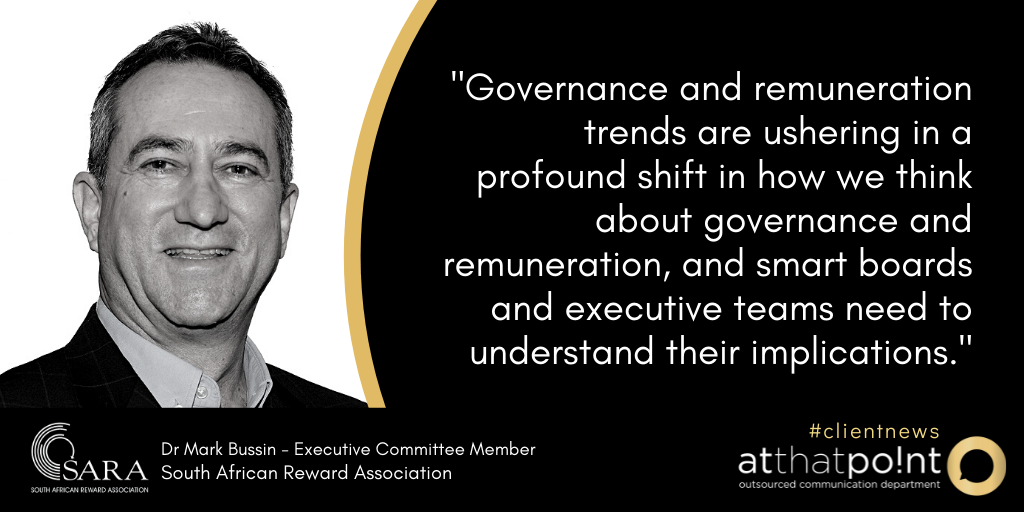
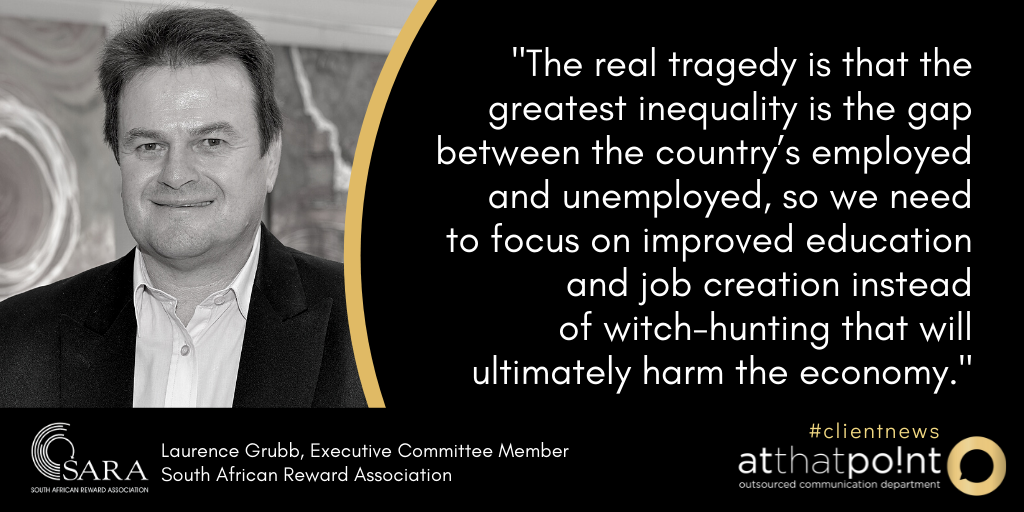
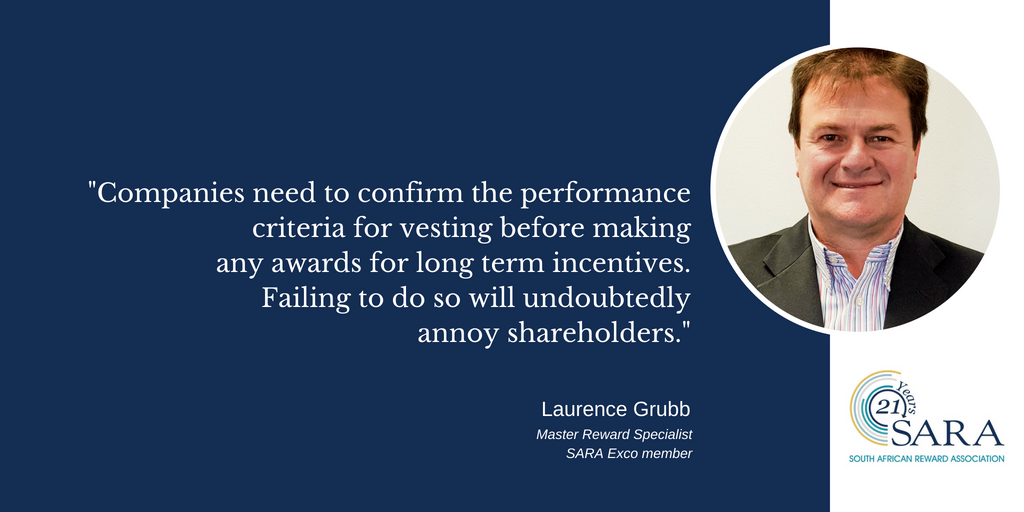


 RSS Feed
RSS Feed